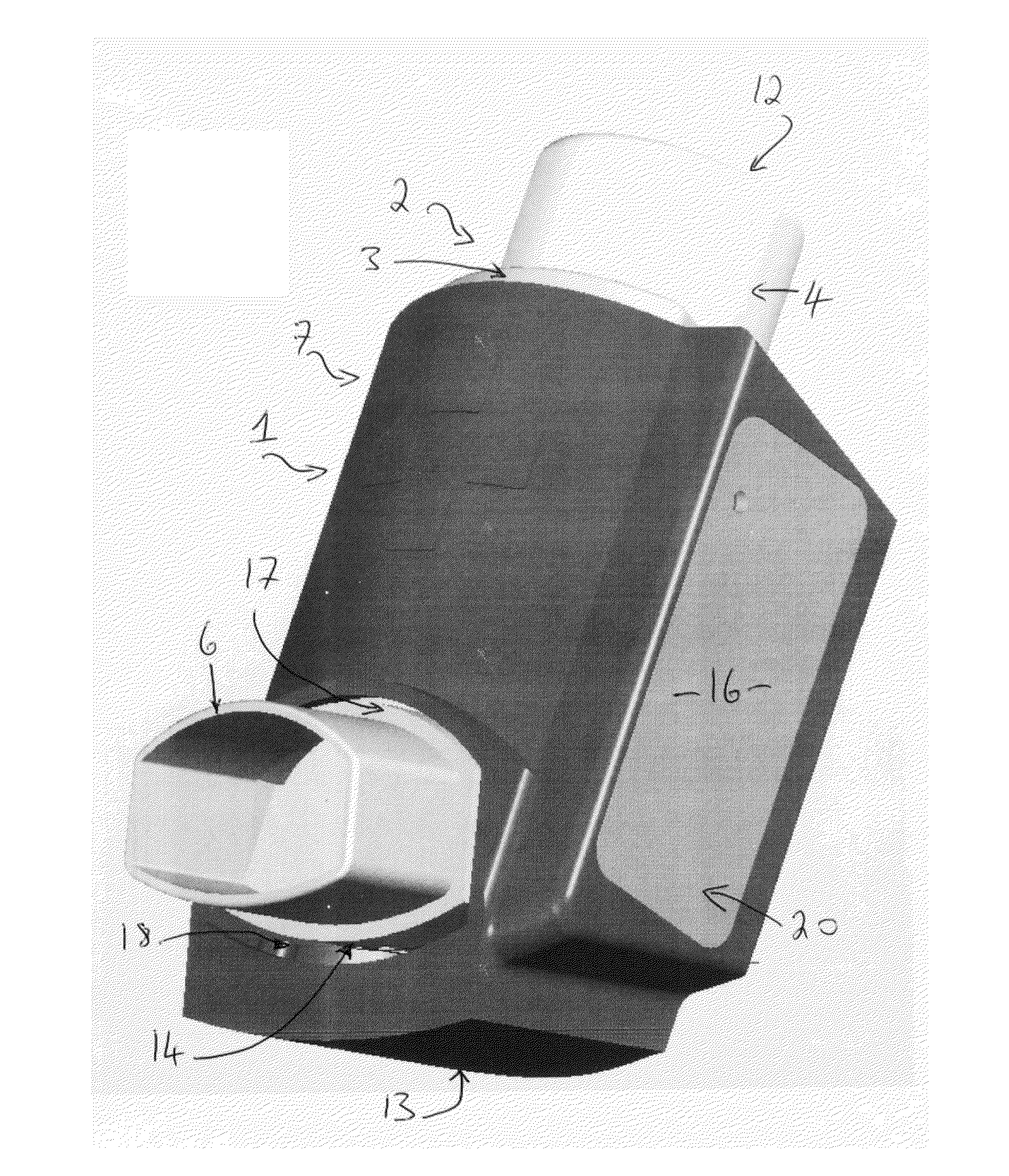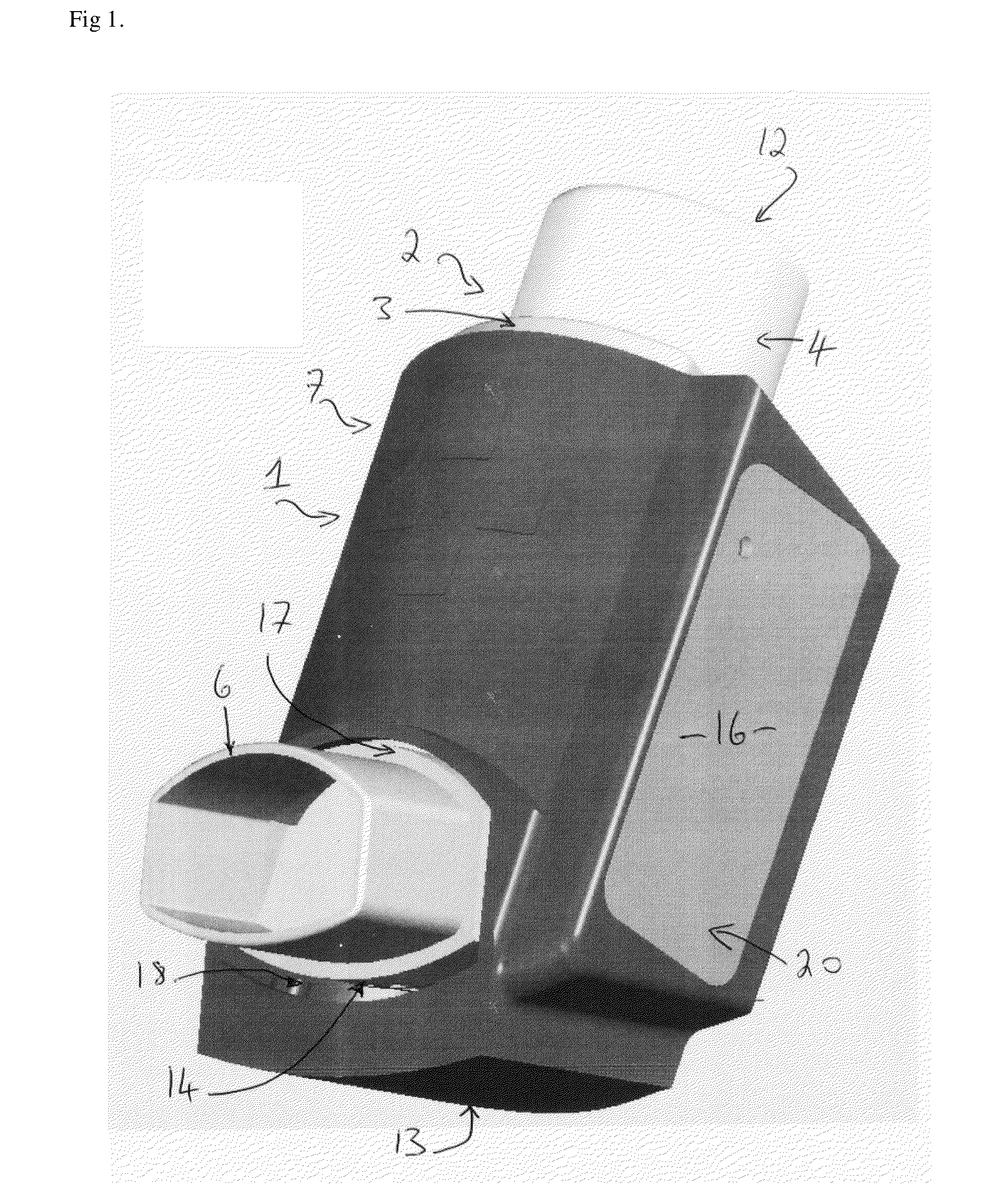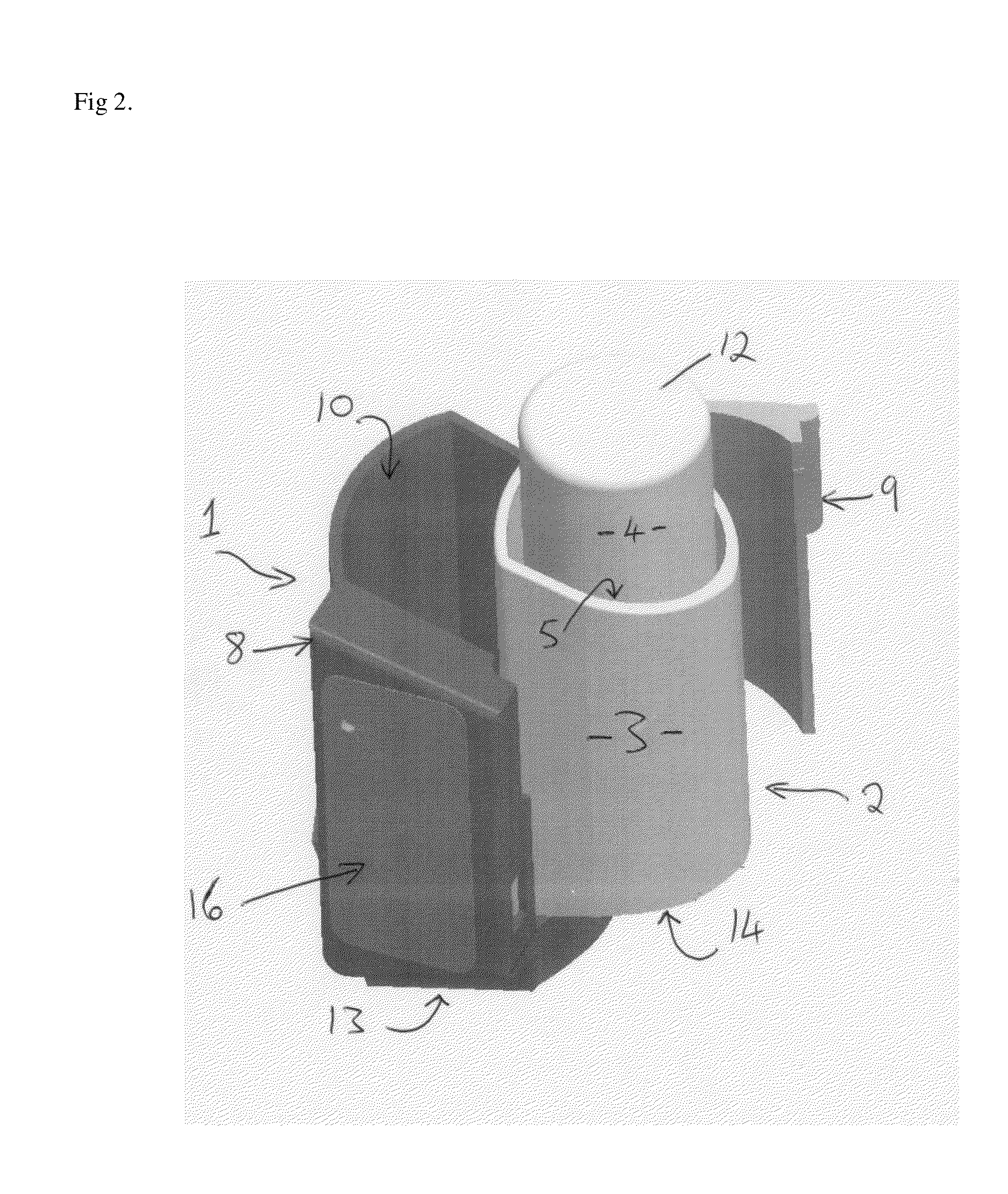A problem or difficulty associated with the use of medicament inhalers generally is poor medicament compliance, particularly in relation to the use of preventer medicament inhalers.
This is a particular problem amongst young children, the elderly, or people with intellectual disabilities.
The consequences of this non-compliance are reduced
disease control, lower
quality of life, lost productivity, hospitalisation and avoidable deaths.
Not only is compliance to preventative medicaments typically low, but it has also been shown that actual compliance by a user is lower than the same user's estimated compliance.
Knowing the number of doses dispensed by, or the number of doses remaining in, the medicament canister is of particular importance to the person using the
inhaler because that person will know when they are close to having to replace the canister (and that person will not otherwise go to use the
inhaler and unexpectedly find that the canister is empty—with possibly dire consequences).
There are several problems associated with the use of such mechanical dose counting means.
Firstly, the mechanical switch mechanisms include
moving parts which may suffer
wear and tear or otherwise deteriorate over time.
Secondly, the switch mechanisms could break off and enter the medicament delivery pathway, and be inadvertently swallowed by the user.
Thirdly, the mechanical switch mechanisms, which are commonly housed within the
actuator tube, can change the
airflow characteristics of the inhaler, which may adversely
impact on the medicament
delivery performance of the inhaler.
Lastly, mechanical switch mechanisms may also be inadvertently triggered by the user, for example during washing of the actuator body to clean away any built up medicament residue.
However, a
disadvantage associated with the GSK Patent is that the incorporation of a dose counting mechanism into each and every medicament canister adds cost.
Moreover, given that each canister typically contains only one month's supply of medicament, it is economically and environmentally wasteful to supply and then discard such technology with each month's medication.
Hence, because such electronic dose counting means also include
moving parts, these parts are likewise susceptible to
wear and tear and / or deterioration over time (they may also be susceptible to breaking off and / or interfering with the
airflow within the inhaler).
Furthermore, the use of most electronic dose counters involve having to make modifications to the medicament inhaler, which has the potential to interfere with the correct operation of the inhaler.
The fitting of such dose counters to an inhaler can therefore be a fiddly or
time consuming operation.
More importantly however, any modifications made to the actuator (or canister) have the potential to interfere with the
airflow characteristics within the actuator, possibly affecting the effectiveness of delivery of a dose of medicament.
This may result in the patient not receiving the required amount of medicament in order to treat the
disease.
The modifications made to the actuator may also be prone to interference while washing the actuator, which could result in inaccurate dose counting or
compliance monitoring (Jewett and Deaton address this issue by housing the
compliance monitoring means within a hermetically sealed housing—which increases cost and manufacturing complexity).
However a
disadvantage associated with this design is that many people, and especially the elderly or very young or people with intellectual disabilities, may not have sufficient strength and / or cognitive abilities to force the canister to dispense a dose by using one hand only.
This will often result in the switch not being engaged by the person.
Hence, the dose counter of Deaton does not allow for all doses of medicament to be recorded regardless of how the user holds and / or operates and / or manipulates the medicament delivery device during the dispensing of each dose of medicament.
A
disadvantage associated with absolute dose counters is that they are dedicated to only one canister at a time.
Hence, they are not able to monitor the ongoing compliance characteristics of a user over a period of time which may involve the user going through many canisters of medicament.
For example, absolute dose counters are not able to monitor a person's usage over all four seasons to determine useful information such as any seasonal fluctuations.
Absolute dose counters are also not able to monitor the ongoing compliance characteristics of a user should they change medicaments when only half way through an existing canister.
This presents its own difficulties or limitations.
Firstly, because the
compliance monitoring device is integrated with the medicament inhaler, it cannot generally be reused for longer than the life of the inhaler.
Compliance monitoring technology, and especially electronic compliance monitoring technology, adds cost when integrated into each and every inhaler.
Given that each inhaler typically contains a one month supply of medicament, it is economically wasteful to supply and then discard such technology with each months medication.
However, reusing an actuator over more than one medicament container can lead to residual medicament build-up that reduces the quantity of the
drug delivered by the inhaler, and changes the deposition properties of the
aerosol particles, meaning patients get less medication.
Furthermore, repeatedly discarding the plastic and electronic compliance monitoring technology also creates an environmental
sustainability problem that needs to be addressed (medicament inhalers are produced in their millions and one company alone has produced more than 500 million inhalers).
However, the removal of the
electronics module from the sleeve renders the sleeve inoperable, which must then be removed and discarded, which is wasteful and expensive (eg, see Page 12, lines 63-65).
Moreover, the fitting of the sleeve and
electronics module to an inhaler is a
time consuming and complex operation (eg, see FIGS. 30 & 31 and the related descriptions on Page 13 and 14).
This presents significant operational difficulties, especially for young children, the elderly or people with intellectual disabilities.
Hence, the McKinnon device cannot be used across a range of different actuators.
The former is analogous to fitting a cap to the top of the medicament canister which has the potential to interfere with the airflow characteristics of the medicament inhaler.
The latter involves modifications having to be made to the inhaler, specifically the actuator, and also results in
moving parts being inside the medicament delivery channel.
Furthermore, Walker uses a dose counter with a mechanical counting mechanism (an external or internal trigger mechanism) which therefore has the same disadvantages generally associated with mechanical counting means, as referred to previously.
Hence, Levy requires modifications to the inhaler prior to being able to be used—which has the potential, over time, to interfere with the effectiveness of the inhaler to properly deliver medicament.
Furthermore, the fitting of dose counting caps to the tops of canisters has the potential to interfere with the airflow characteristics of the medicament inhaler.
This can result in the inhaler being unable to be operated easily by
small children, for example due to the child not having large enough hands to grasp both the top of the cap / canister and the bottom of the actuator or attachable housing.
Another disadvantage associated with the releasable housings or sleeves described in McKinnon, Walker and Levy is that they would not be able to be used in relation to a medicament canister already fitted with an absolute dose counter, eg the device described in the GSK Patent referred to previously.
However, Altana suffers from the same disadvantage as Deaton, as referred to previously.
Hence, the dose counter of Altana does not allow for all doses of medicament to be recorded regardless of how the user holds and / or operates and / or manipulates the medicament delivery device during the dispensing of each dose of medicament.
Furthermore, the device described in Altana is prone to falling off the
mouth piece, for example due to the inhaler being bumped against a surface or perhaps being jostled around inside a person's pocket or bag.
 Login to View More
Login to View More  Login to View More
Login to View More 


